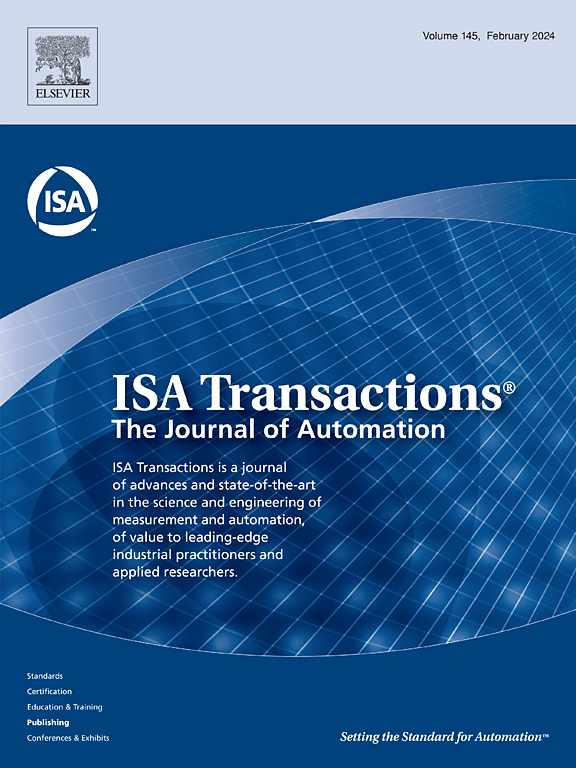Smooth and safe stop: Fixed-time fault tolerant control for heavy legged robot with active identification on tolerance capability
IF 6.3
2区 计算机科学
Q1 AUTOMATION & CONTROL SYSTEMS
引用次数: 0
Abstract
Heavy-legged robots (HLRs), integral to optimizing efficiency in manufacturing and transportation, rely on advanced active servo fault diagnosis and fault-tolerant control (FTC) mechanisms. This study presents an FTC framework with active fault status identification, fault tolerance capability assessment, and model uncertainty handling. A key contribution is the introduction of an active servo fault state estimator (ASFSE), which enables real-time monitoring of servo status by comparing residual differences between servo and controller outputs. The system’s tolerance capability interval (TCI) is tied to the servo state, with the dual-line particle filters (DPF) algorithm predicting when the HLR exceeds the TCI under faults. Subsequently, a target trajectory modifier (TTM) and fixed-time backstepping controller (FTBC) are proposed. The TTM promptly adjusts the trajectory when the HLR surpasses the TCI, while the FTBC ensures fixed-time convergence based on the predicted failure time for precise trajectory tracking. As the HLR approaches its fault tolerance limits, the TTM and FTBC ensure a smooth stop, thus mitigating equipment damage caused by servo faults. Mathematical stability proof and simulation validations confirm the effectiveness of the FTC framework.
平稳安全停车:基于容错能力主动识别的大腿机器人定时容错控制。
重型机器人(HLRs)是优化制造和运输效率的重要组成部分,它依赖于先进的主动伺服故障诊断和容错控制(FTC)机制。本研究提出一个具有主动故障状态识别、容错能力评估和模型不确定性处理的联邦贸易委员会框架。一个关键的贡献是引入了主动伺服故障状态估计器(ASFSE),它可以通过比较伺服和控制器输出之间的剩余差异来实时监控伺服状态。系统的容差能力区间(TCI)与伺服状态相关联,在故障情况下,采用双线粒子滤波(DPF)算法预测HLR何时超过TCI。随后,提出了目标轨迹修正器(TTM)和定时反步控制器(FTBC)。TTM在HLR超过TCI时及时调整轨迹,FTBC根据预测的故障时间保证固定时间收敛,实现精确的轨迹跟踪。当HLR接近其容错极限时,TTM和FTBC确保平稳停止,从而减轻伺服故障造成的设备损坏。数学稳定性证明和仿真验证证实了FTC框架的有效性。
本文章由计算机程序翻译,如有差异,请以英文原文为准。
求助全文
约1分钟内获得全文
求助全文
来源期刊

ISA transactions
工程技术-工程:综合
CiteScore
11.70
自引率
12.30%
发文量
824
审稿时长
4.4 months
期刊介绍:
ISA Transactions serves as a platform for showcasing advancements in measurement and automation, catering to both industrial practitioners and applied researchers. It covers a wide array of topics within measurement, including sensors, signal processing, data analysis, and fault detection, supported by techniques such as artificial intelligence and communication systems. Automation topics encompass control strategies, modelling, system reliability, and maintenance, alongside optimization and human-machine interaction. The journal targets research and development professionals in control systems, process instrumentation, and automation from academia and industry.
 求助内容:
求助内容: 应助结果提醒方式:
应助结果提醒方式:


